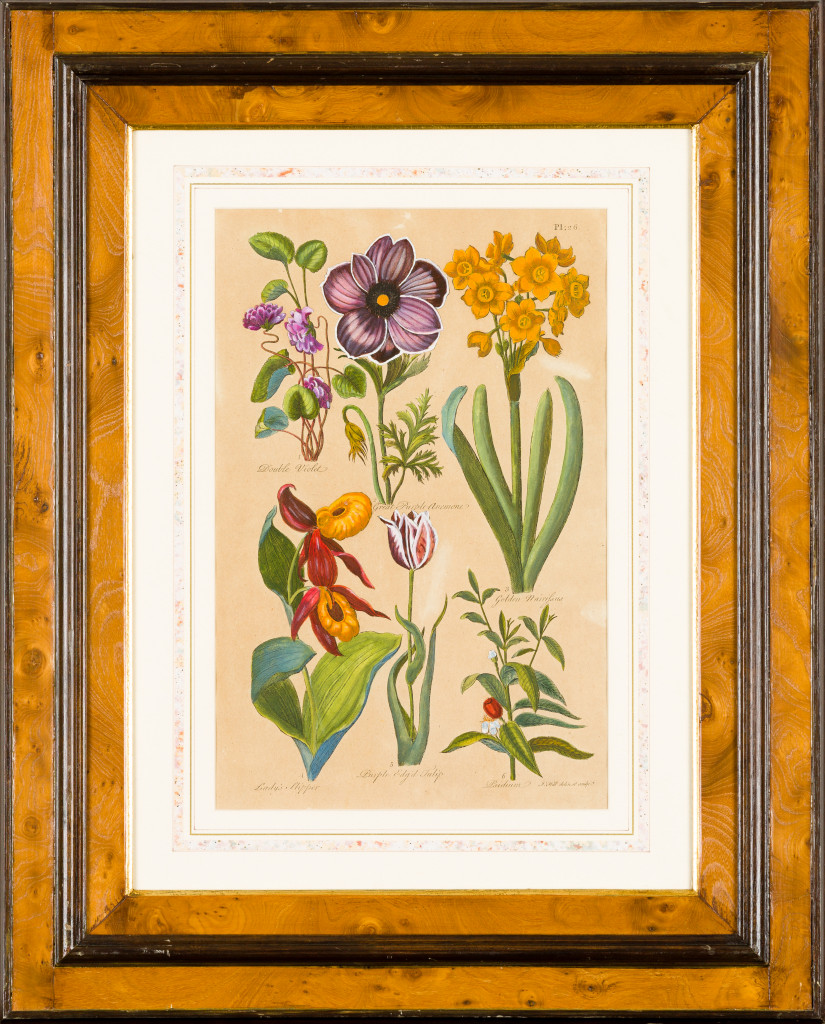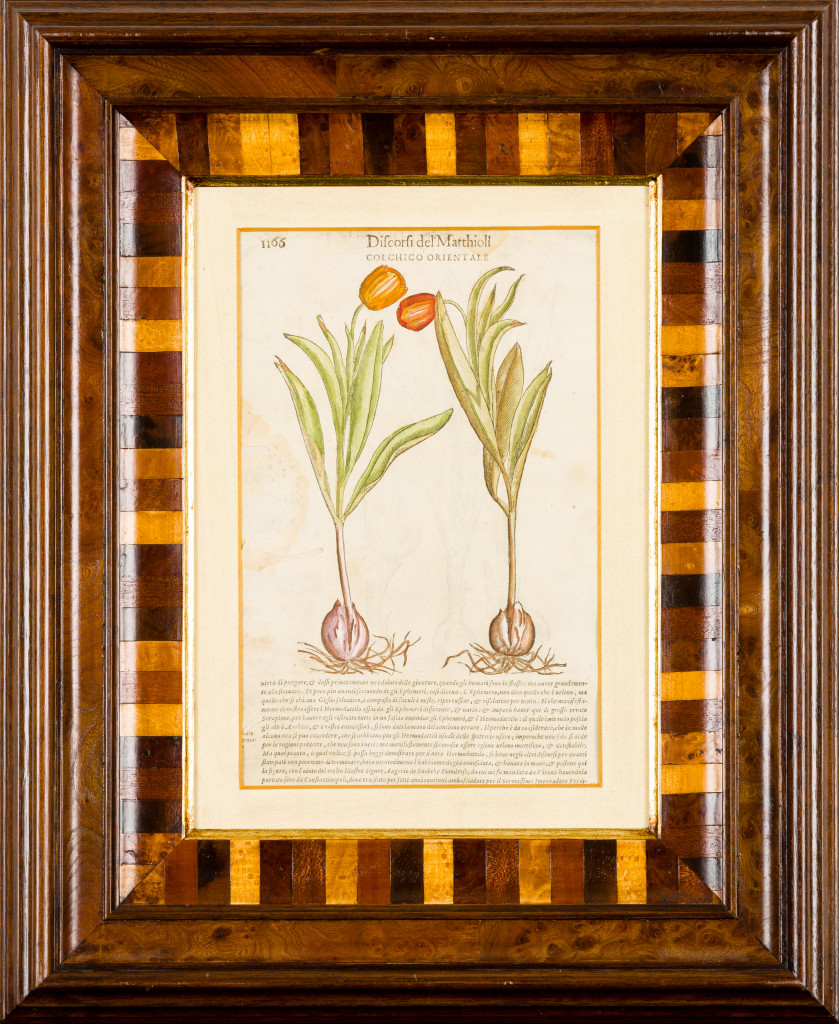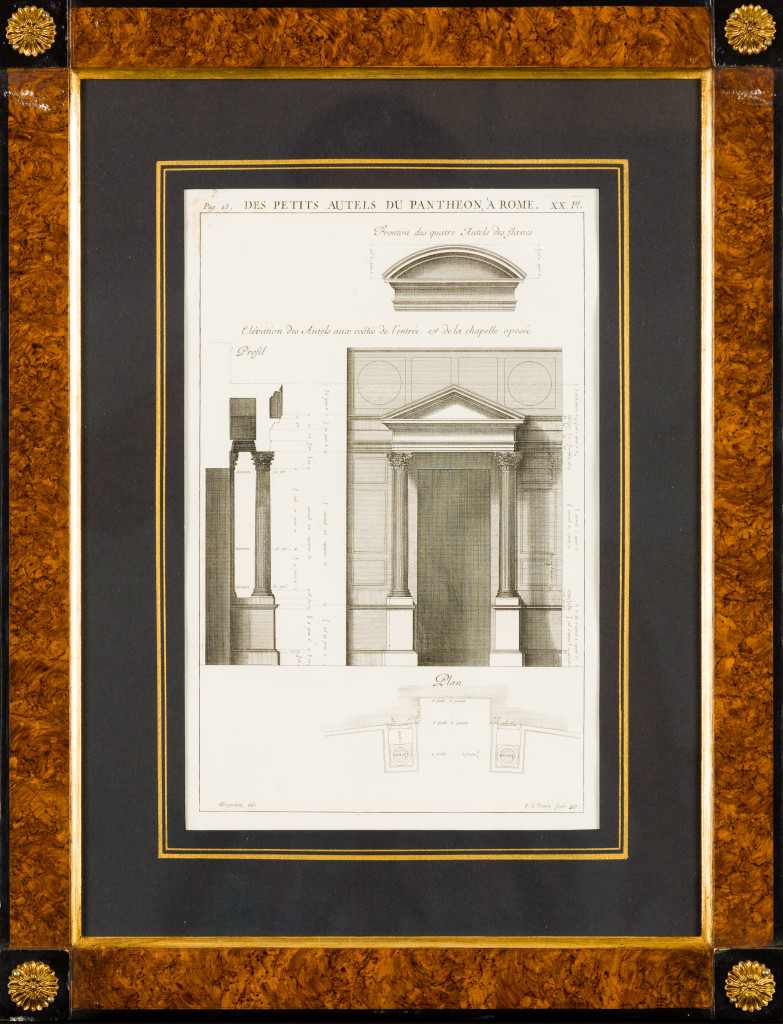
The latest exhibition at the Ann Norton Sculpture Gardens came out of the blue – or perhaps an attic. It is the sort of thing that happens through a friend of a friend and remains private at the request of an anonymous patron.
That’s how the venue ended up with hundreds of engravings and lithographs dating from the Renaissance to the 19th century. On display now, along with a price tag, are delicate prints featuring flowers, tropical plants and fruits as well as architectural renderings of structures in Paris and Roman statues and frames (made by Giovanni Bello) in mahogany and tortoise shell. In terms of taste, there is something for everyone’s office or home. The prices are mostly in the three digits, which hasn’t deterred buyers.
“We began with 300 and we have sold a little over 50,” said curator Cynthia Inklebarger, two weeks after Antique Engravings and Lithographs opened. Inklebarger does her best to rearrange the pieces on the wall as soon as one sells and a space opens up.

The west gallery room houses the oldest and most colorful engravings. Among the most vivid is a series of six by British-born John Hill, who studied botany and is known to have collected rare plant species in his travels. The assortment of lively flowers and plants are presented in a burl wood frame handmade in Italy. These works date back to 1745 and are priced at $350.
They appear alongside floral prints from around 1583 dually credited to Giorgio Liberale and Wolfgang Meyerpeck. The artists were commissioned by Pietro Andreas Mattioli, an Italian naturalist and physician, to illustrate a new edition of Dioscorides’ De Materia Medica, the most comprehensive guide of medicinal plants at the time. The illustrations succeed at being detailed and clear, even when the text isn’t. These copper, hand-painted engravings are valued at $500.

For a less laboratory/science museum feel, head to to the small room by the stairs leading to the second floor. You will find antique mirrored frames holding hand-colored engravings of elegant ladies in elaborate gowns and hairdos, their porcelain skin adorned with bows and ruffles. They showcase their corseted waists while holding fans and posing glamorously by equally rich furniture pieces. The works, ranging in price from $100 to $125, depict the French fashions from the late 1800s and are from the ladies’ magazine of the time, Journal des Demoiselles.
The ladies are dressed in soft blues and pinks while others wear a darker green. The color was applied by hand. Don’t leave this room without seeing the green-and-cranberry marbleized handpainted mat in a series of fruit lithographs from 1828. Notice tiny brown spots emerging on the fruit – here depicted whole and cut in half – while some of the leaves have begun turning yellow.
A pleasant surprise is the inclusion of works by two women artists: Augusta Withers (British) and Madeleine Basseporte (French). Withers’ pieces are younger (c. 1870) and feature bright red hues, roses and white orchids as if painted under a bright white light. They are framed in pale mahogany and go for $90. Though pricier, I prefer the warmth quality of Basseporte’s prints, where fruits look like golden, forbidden prizes and the long, narrow leaves twist and turn. Basseporte served as the official painter to King Louis XV’s botanical gardens in Paris while Withers was Queen Victoria’s official flower and fruit painter.
Inklebarger, who will be on site every Wednesday to answer questions about the collection, is quick to point even those prints not produced by women could have a woman’s touch. Often times, the coloring duties were left to them because a lot more men than women were color-blind.

If rich detail is your cup of tea, stop by Antoine Desgodetz’s architectural engravings of Ancient Rome. You will understand why King Louis XIV commissioned the French architect to study and capture Roman ruins in the most precise way possible. Desgodetz’s extensive observations and recordings led to the 1682 publication of Les edifices antiques de Rome, a respected guide on ancient architecture until the end of the 18th century.
Before going home with silly ideas about recreating the experience with a DIY project, stop and consider two original engravings from 1880 by Frederick Edward Hulme available for $25. They are the smallest in the show, but they are the real deal.
Antique Engraving and Lithographs runs through Oct. 30 at the Ann Norton Sculpture Gardens, 2051 S. Flagler Drive, West Palm Beach. The gardens are open Wednesday through Sunday from 10 a.m. to 4 p.m. Admission for non-members is $10; seniors pay $8, students $7, and children under 5 are admitted free. Call 832-5328 or visit ansg.org for more information.